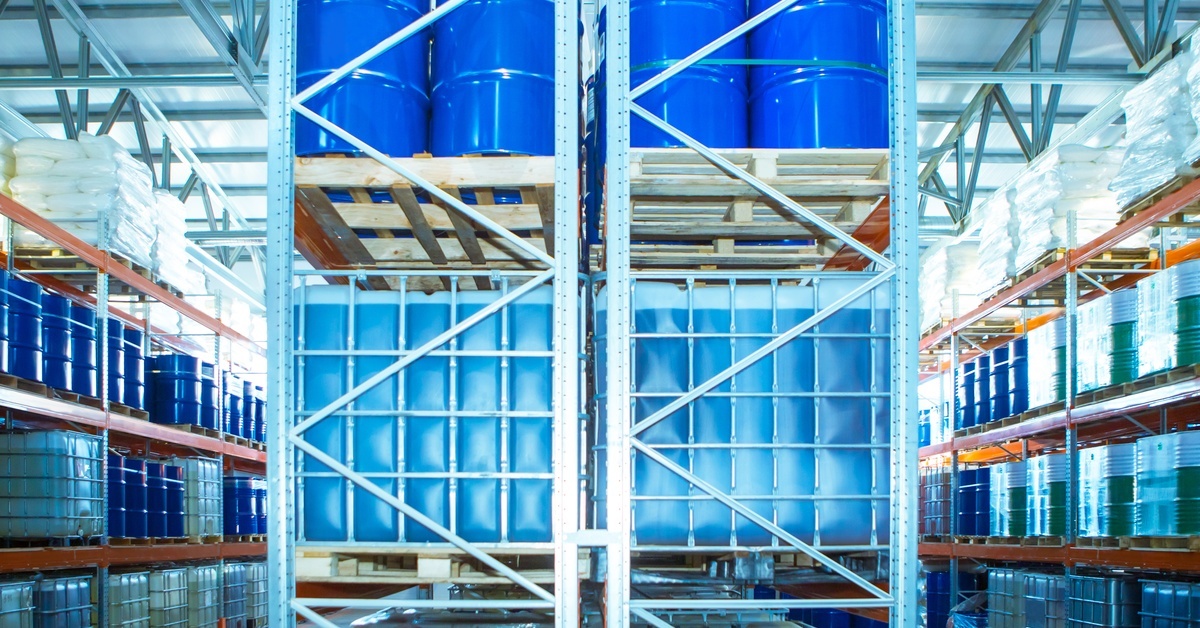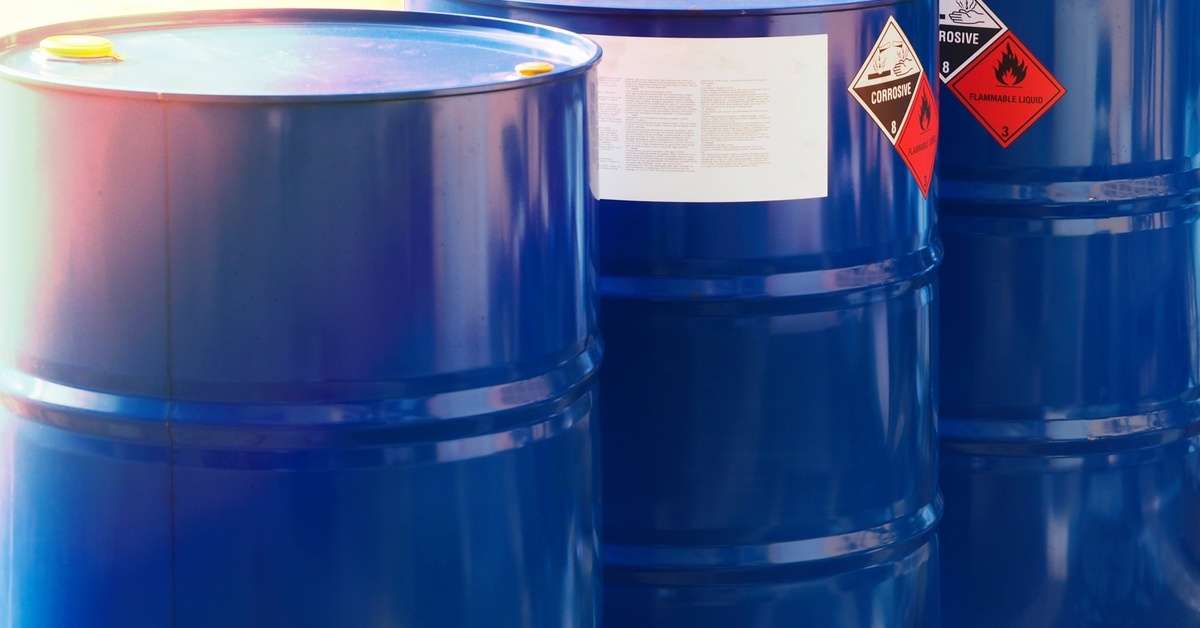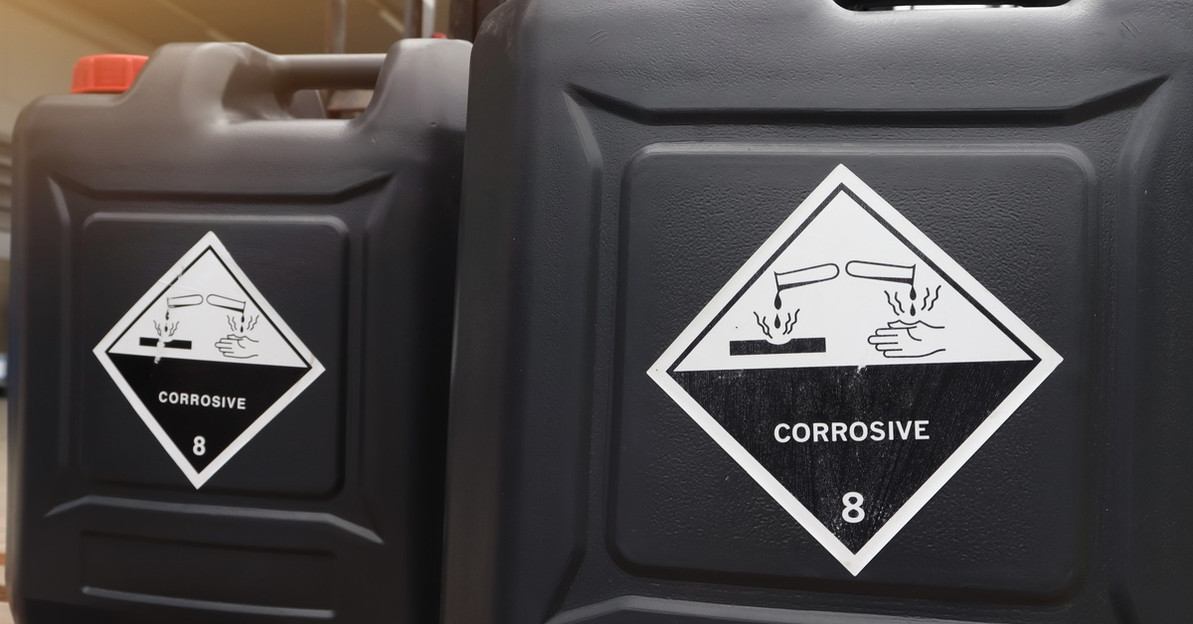All About Pairing Containers With Corrosive Substances
Handling corrosive substances is critical in many industries, including manufacturing, pharmaceuticals, and research laboratories. While necessary for various processes, these chemicals present significant hazards if not handled and stored properly.
A key component of mitigating these risks involves selecting the appropriate containers for corrosive substances. Use this comprehensive guide to explore the essentials of pairing the right containers with corrosive substances, detailing everything from the types of chemicals involved to the considerations for long-term storage.
Corrosive Substances and Why Proper Handling Matters
Corrosive substances are chemicals capable of damaging or destroying materials they come into contact with, such as human tissue or other substances, through chemical reactions. Examples range from strong acids like sulfuric acid and hydrochloric acid to bases such as sodium hydroxide and potassium hydroxide. Oxidizing agents also make this list, as their reactive properties cause significant damage when improperly contained.
Selecting the correct container is an essential factor when handling these substances. Beyond catastrophic leaks or spills, improper storage results in chemical contamination, workplace hazards, financial liabilities, and increased environmental risks. Prioritize suitable container materials and designs aligned with the chemical properties of the corrosive substance; organizations ensure safer workflows, regulatory compliance, and operational efficiency.
Classes and Types of Corrosive Substances
Corrosive substances are typically classified into acids, bases, and reactive agents. Acids such as sulfuric acid, widely used in industrial processes, and hydrochloric acid, key in laboratories and manufacturing, have powerful corrosive properties that can quickly degrade incompatible materials.
On the other hand, bases like sodium hydroxide, commonly known as caustic soda, and potassium hydroxide, used in cleaning and industrial applications, cause damage through their highly alkaline nature. Oxidizing agents, including substances like hydrogen peroxide and nitric acid, add complexity with their potential to react explosively or cause fires when mishandled. Understanding these categories is essential for selecting container systems for maximum chemical resistance.

The Role of Material Compatibility
Material compatibility should always be at the forefront when determining how to store corrosive substances. Compatibility denotes a material’s ability to resist degradation, corrosion, or contamination when exposed to a specific chemical. Failing to ensure compatibility risks the integrity of the container and the safety of your employees and environment.
Prolonged exposure to corrosive substances weakens unsuitable materials over time, leading to micro-leakages or catastrophic containment failures. Accidental blending of incompatible materials also introduces dangerous reactions or contamination risks. Practical evaluations of material compatibility help extend the lifespan of storage systems while maintaining operational safety.
Common Materials Used for Corrosive Containers
Regarding container materials, versatile options, including plastics, metals, and glass, are available. High-density polyethylene (HDPE), polytetrafluoroethylene (PTFE), and polyvinyl chloride (PVC) are prominent plastic materials favored for their corrosion resistance, lightweight, and versatility.
Metals such as stainless steel and alloys, known for their strength and resistance to high temperatures, are ideal for certain applications but unsuitable for strong acids unless coated for protection. Glass containers offer remarkable non-reactivity and transparency, making them ideal for laboratory use, though their fragility limits industrial applications. Each material has strengths and limitations, and the selection depends on the specific chemical and operational context.
Key Considerations When Choosing Containers
Consider factors like material compatibility, temperature resistance, and reactivity to ensure the effective storage of corrosive substances. Certain chemicals require containers that are able to withstand elevated temperatures, which is essential for industries handling acids like sulfuric acid under high-temperature conditions. Pressure resistance is another critical factor for containers storing volatile or pressurized chemicals such as VOCs.
Additionally, minimizing risks like chemical leaching is important for sensitive applications such as pharmaceuticals and food production. Effective decision-making regarding containers begins by evaluating the complete lifecycle of the substance, from initial storage to transportation and usage.
Plastic Containers and Their Applications
Plastic containers lead to versatility when handling corrosive substances. Materials like HDPE boast strong chemical resistance, making them ideal for handling various compounds, particularly detergents, acids, or alcohols. PTFE and PVC expand these possibilities with heat resistance and structural integrity.
While plastic containers generally deliver excellent corrosion resistance, users should remain cautious of limitations like permeability to gases and UV degradation over prolonged outdoor exposure. Compatibility testing for specific substances, particularly aggressive oxidizers, ensures the reliability of such solutions for short-term and long-term storage.
When To Use Metal for Container Storage
Metal containers provide unparalleled strength and durability, especially in environments requiring high pressure or temperature resistance. Stainless steel, for instance, offers excellent resistance to corrosion under various conditions but demonstrates vulnerability against certain acids, such as hydrochloric acid. To address this, specialized coatings like epoxy or fluoropolymers are beneficial.
Aluminum alloys contribute additional versatility while reducing overall weight. Metal solutions come into their own for transportation processes or maintaining stability in industrial environments dealing with pressurized corrosive liquids.
The Role of Specialized Coatings
Coatings and linings extend the utility of conventional materials in corrosive substance storage. When pairing containers with corrosive substances, it’s important to consider the benefit of coatings for various materials as an extra line of defense.
Epoxy-based coatings provide an affordable yet effective barrier against corrosion in metal containers and tanks. Similarly, fluoropolymer coatings excel when handling extreme acids, bases, or reactive compounds.
These coatings enhance resistance across a wider range of temperatures and chemical concentrations, helping industries prolong the longevity of their storage solutions. Optimal use cases include manufacturing plants where specialized coatings protect costly infrastructure investments, ensuring smooth workflows.
Navigating Safety Standards and Regulations
Compliance with industry standards is critical when storing and handling corrosive chemicals. Regulatory bodies such as OSHA, DOT, and the EPA enforce strict guidelines governing container design, labeling, and maintenance.
Proper container labeling reduces risks by clarifying hazards, while diligent record-keeping highlights compliance efforts during inspections. By adhering to these standards, organizations promote workplace safety and avoid severe penalties associated with regulatory breaches.

Ensuring Proper Storage and Maintenance
Establishing reliable storage for corrosive substances demands rigorous attention to factors such as ventilation, proper segregation, and routine container inspections. Containers require storage in well-ventilated areas designed to minimize buildup of harmful gases.
Ensuring incompatible chemicals remain separately stored reduces the likelihood of accidental reactions. Routine inspections are essential for identifying minor leaks or failures in coated surfaces, enabling timely interventions to prevent escalation.
Industrial Applications and Real-World Usage
Across diverse sectors, corrosive substance storage solutions bring value to manufacturing and other high-impact industries. Fluid handling products, for instance, rely heavily on corrosion-resistant designs and technologies. Laboratories benefit from glass or plastic systems adapted for high-accuracy chemical analysis.
Meanwhile, waste management industries depend on advanced metal or polymer containers engineered for long-term chemical containment. Tailoring container solutions to each industry ensures precision and safety.
Integrating innovation and sustainability is shaping a new era of industrial practices. Adopting advanced materials and smart technologies will achieve greater efficiency, safety, and environmental responsibility.
These advancements address current challenges and pave the way for a more sustainable and resilient future. As industries evolve, the collaboration between technology and sustainability will remain a critical driver of progress.
Recent Posts
-
The Role of Desiccants in Protecting Hygroscopic Chemicals
Hygroscopic chemicals readily absorb moisture from the surrounding environment, leading to compromis …May 19th 2025 -
All About Pairing Containers With Corrosive Substances
Handling corrosive substances is critical in many industries, including manufacturing, pharmaceutica …May 12th 2025 -
Why Solvent Purity Is Crucial in the World of Chemistry
When producing accurate and reliable results in chemistry, solvent purity is non-negotiable. Many se …May 11th 2025




